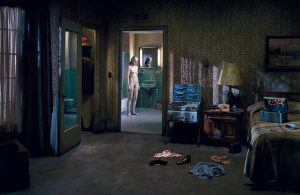Where does that leave the photographer?
As storyteller or history writer?
Do you tend towards fact or fiction?
How could you blend your approach?
Where is your departure from wanting/needing to depict reality. Make some notes on these questions in your learning log.
A photographer can be both a storyteller and a history writer and sometimes both (at the same time), depending on the context and intent of their work.
- Storyteller: Photography has a unique ability to tell stories through visual imagery. It can capture moments, emotions, and narratives in a single shot, effectively conveying a story or message without the need for words. Photojournalism, documentary photography, street photography, or fine art photography, photographers use their images to narrate stories and often evoke emotions, amplifying the power of images.
- History Writer: Photography plays a crucial role in documenting and as a witness to historical events, cultural shifts, and societal changes. Historical photographs offer a visual representation of moments, people, and places from the past, providing valuable insights into the history of a region, a community, or the world.
In some cases, a photographer may deliberately set out to document historical events or capture images that become significant historical records. For example, iconic photographs from wars, revolutions, social movements, and cultural milestones have become important elements of our historical understanding- but that historical understanding (and interpretation) is underpinned by how the photographs are used and the words that go with them. Photographs are malleable. Context is important.

Eddie Adams’s photo of Brigadier General Nguyen Ngoc Loan shooting a Viet Cong prisoner is considered one of the most influential images of the Vietnam War.
For example, Eddie Adam’s iconic image from the Vietnam War is a historical image, but the back story and context do change how you view the image- the prisoner was suspected of killing the wife and six children of a friend of Loan. Saigon was in chaos and it was brutal war. Adams spent time with Loan in the following weeks which changed his understanding of the man. No doubt it was a brutal killing, and when you think that Gen. Loan ended up with his own pizza parlour in America after the war, the image has more layers to peel back.
At this stage of my development, I use both the historical and storytelling qualities of images as creative tools and or approaches. I often do event photography, and these sessions tend to be about capturing the event for the record- this celebratory attended, and here is the proof. However, I also have begun to try and tell stories through ‘series’ of images, where I look to communicate themes running through my images. For example, I’m doing a project on Dubai, and one of the themes is ‘exclusion’- its an incredibly rich city, but it has barriers that exclude people from different strata of society. Some are obvious, others not. The images show the city and are a historical record of it at this point in time, but some images are purposely there to tell the story. Also where possible I try to exclude people from the images. (The series can be seen here)

Crewdson’s images pull you in and immerse you in his fictitious worlds, often unsettling but always compelling.
Regarding fiction, this, I find trickier. I used to over-edit my images and even remove elements to make them ‘perfect’. Today I would consider this as fiction or, as Wim Wenders calls it, Faux-photography. Not sure this has a place in ‘traditional’ photography, but such is the power of images that even when we suspect some degree of alteration, we tend to believe the image somewhat-celebrities on magazine covers. Having said that, I see the value in creating fictional scenes to communicate and tell a story, for example, the work of Cindy Sherman or Gregory Crewdson. We know these images are fiction, but they communicate and tell great stories.

